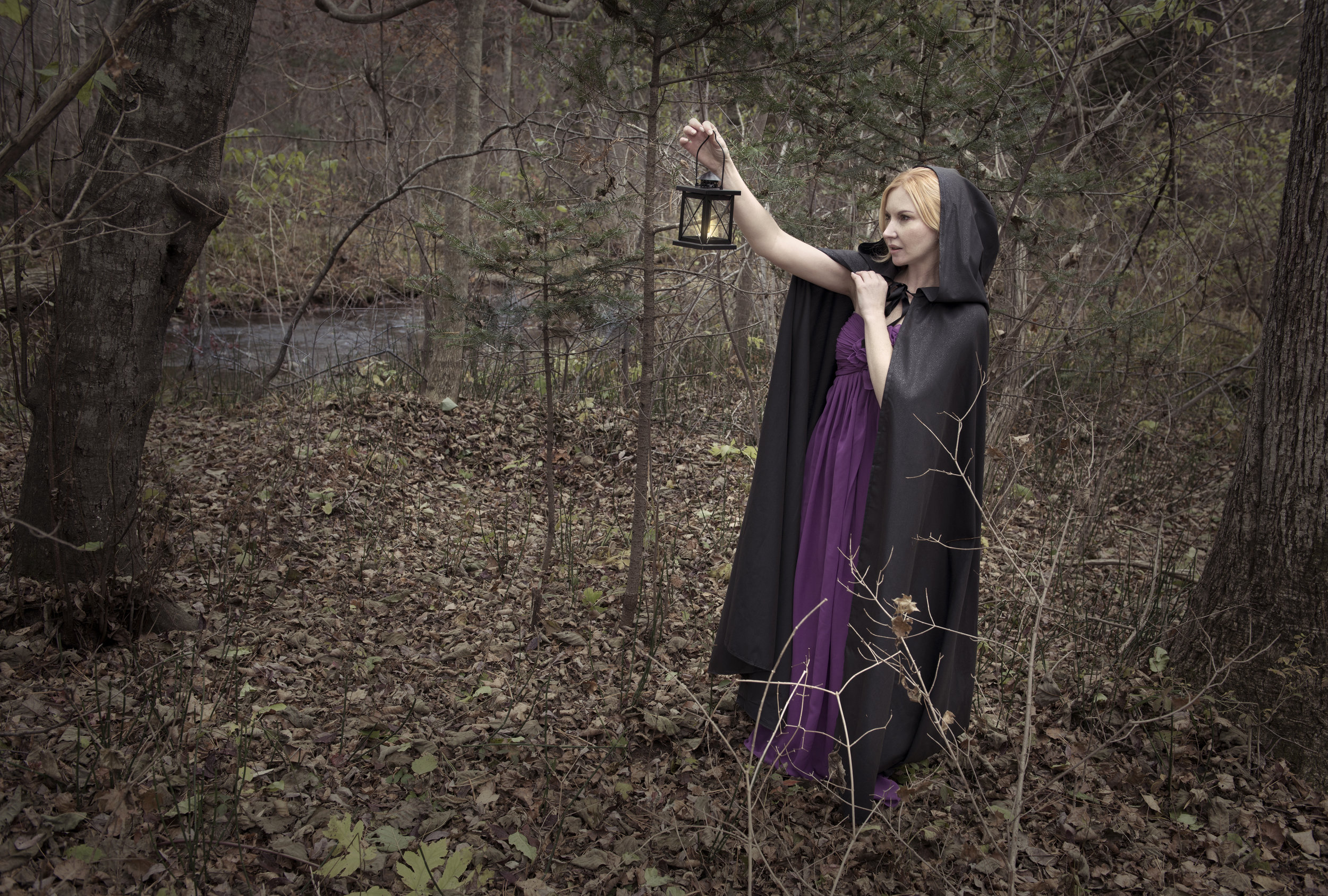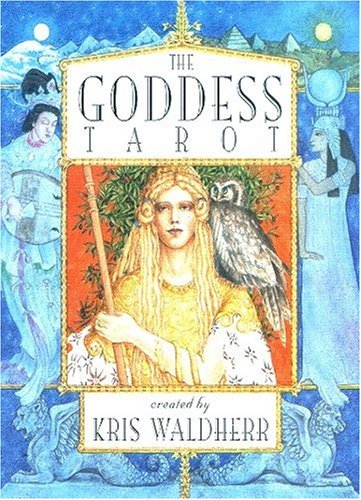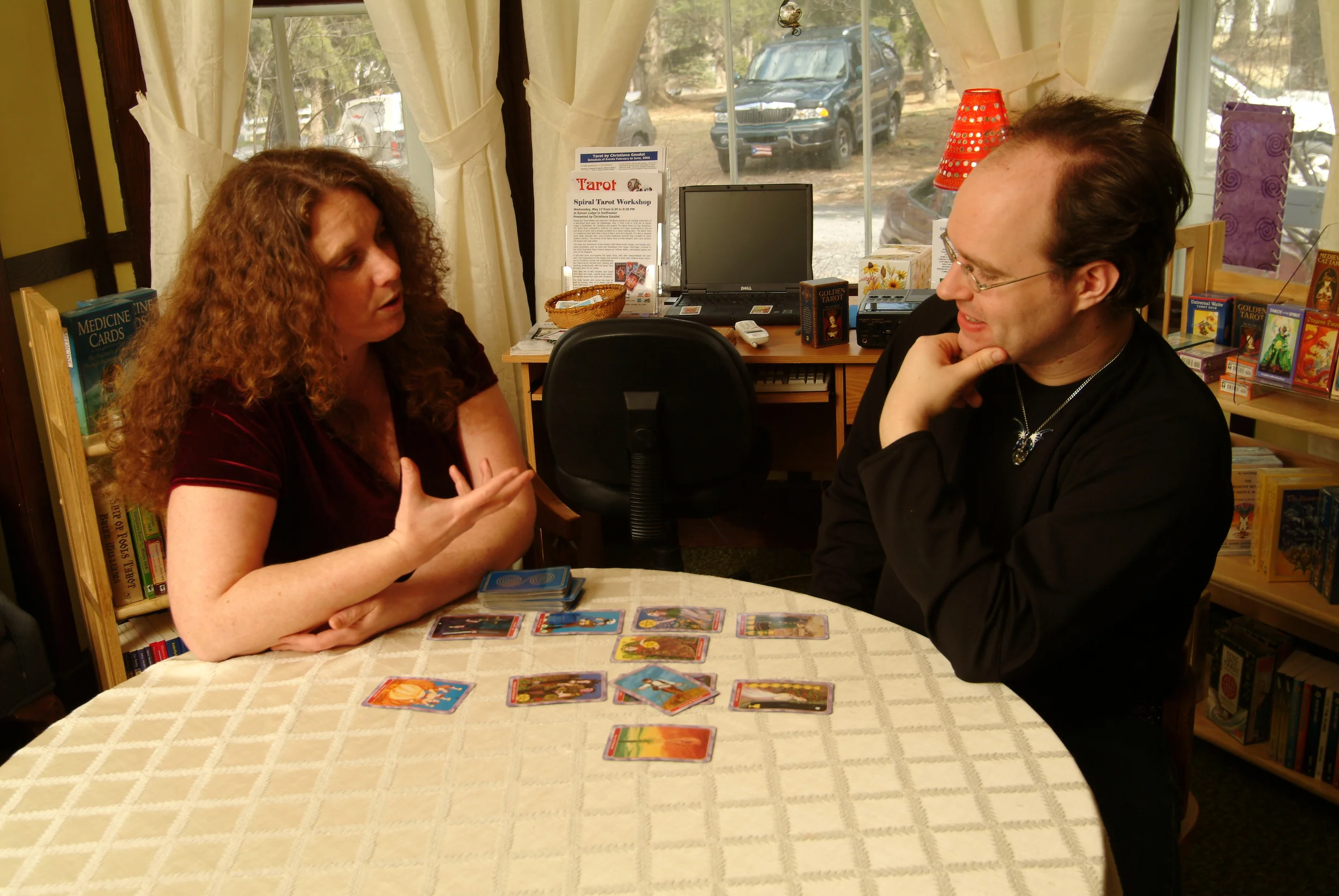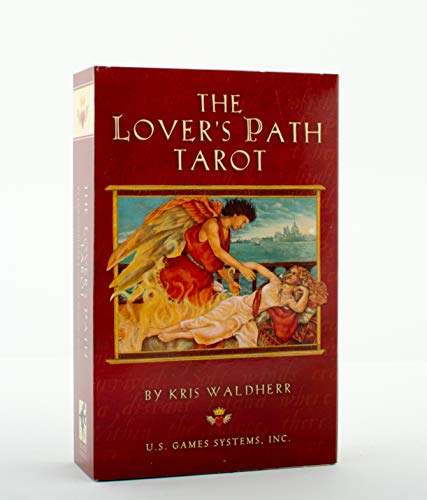
Welcome to my Community Blog for tarot enthusiasts.
Anyone with an interest in tarot, be they student, artist, collector, writer, teacher or reader, is welcome to
to include here.
Archetypes in Action: How Tarot Updates Itself
The archetypes of tarot are timeless.
Archetypes in Action
How Tarot Updates Itself
I feel as though I spend half my life waiting for updates to install on my many devices. I understand the need for this and try not to complain too much. Updates are necessary to respond to changes in security threats, user needs and machine capabilities. Recently, I have seen some social media conversations that suggest tarot needs to be updated, perhaps for metaphorically similar reasons.
Updates and revisions to sacred texts often cause acrimony. I remember in the 1970s that the Evangelical teachers at my private Christian high school hated the then-modern “Good News Bible” that my father, a fairly hip United Methodist Minister, revered.
As sacred texts go, tarot differs from the Bible in many ways, not the least of which being it is made of pictures instead of words. Another difference is that in tarot, multiple interpretations of the cards, both in art and divination, are welcome.
There are many tarot artists who seek to ‘update’ tarot by using modern images, and working to make the image more inclusive, and more reflective of our diverse society. There are many tarot authors and readers who do the same, finding within the cards interpretations that reflect our modern lives.
I submit that the reason it is relatively simple for an artist to create modern versions of our beloved tarot characters, and for readers and writers of tarot to find new, modern interpretations, is that archetypes are timeless.
I sometimes think that, as the world of tarot has grown exponentially, many new tarotists have focused more on tarot images than on tarot archetypes. This is reflected in much modern tarot art that takes significant liberties in the depictions of the tarot archetypes. It happens to the point that some tarotists worry this might encourage a potential loss of universal tarot understanding – that our beloved archetypes might slip away in the sands of time.
Our understanding of those archetypes has already changed over decades – that’s part of the ongoing living process of tarot. Yet, many of us don’t want there to be so much change that we lose cohesion to the point that tarot becomes any random oracle.
I vacillate between two moods here. Do I trust the process and trust that the truth of tarot will keep itself, nurtured by the tarot historians and scholars in each generation? Or, do I give in to a sense of unease that, in a sea of “Divine Child,” Ancestor,” and “Master of the Head” cards, we will lose the Hierophant. That’s ironic, of course, since “Hierophant” itself is a modern renaming of the original Major Arcana Five, the Pope.
Creative tarot depictions work to define the archetype even as they redefine it. Archetypal assignment tarot decks help us find the commonality between different depictions. The central energy we find as we compare depictions is the archetype in its present moment.
For example, the Magician in Kris Waldherr’s Goddess Tarot is Isis. In Lisa Hunt’s Animals Divine Tarot the Magician is Cerridwen. When we look at Isis and Cerridwen together, we can try to find the central themes that relate them to each other, and then connect that theme to more traditional associations like Hermes, the number one, the element of Air, Mercury, the path from Kether to Binah, and keywords like “tools, skills and abilities andtrickster”. If we are able to do that successfully, then our tarot knowledge, and tarot itself, is on a firm foundation.
My primary thesis here is that, regardless of imagery, tarot can stay relevant to a changing world without major overhaul, because of the way the archetypes speak in divination. For example, in our modern world, our automobiles are very important. While there were no cars during tarot’s inception, the Chariot has come to signify our vehicles, and our issues of transportation.
Computers and the internet easily appear in the Pages, and some of the Swords cards. Even the World can now speak of the World Wide Web. There is nothing in modern life that tarot can’t depict. The dating app Tinder looks to me like the Seven of Cups, while Bumble sometimes shows up as the Queen of Swords.
I’ve seen these spontaneous tarot updates happen relative to locale as well. I first started reading professionally in Putnam, Connecticut, right as the Mohegan Sun and Foxwoods Casinos were becoming some of the largest casinos in the world. I started noticing that the Wheel of Fortune would appear for casino workers, those hoping to be employed by the casinos, and those who were developing gambling addictions.
The question is, how do we come to know modern meanings for ancient cards? The answer is, the cards tell us!
There are three important ways to consider modern meanings for your cards. One is through communication with other tarotists. As we share our stories, we share our oddball experiences with the cards and our offbeat card interpretations. When we keep these stories in mind, sometimes they pop up in our memories to inform a particular reading. When that happens in a way that is accurate and helpful, that new meaning will forever be a possibility whenever we see that card.
The second way is to look through your deck with an imaginative eye. Think about what cards might mean. Then, when you see those cards in action, you can see if those modern alternative interpretations might be pertinent.
These two methods for learning new card meanings illustrate a reason it is so important to have in your practice real-time readings for others; it’s a solid way to confirm the truth in the cards.
The third method of allowing tarot to update itself is simply to pay attention in readings. As you look at the cards, let your intuition lead you to what they might be saying. Over time in your practice you will remember the first time a particular card gave you a new type of message. After that, the possibility of that message with be present every time that card appears.
In this way we grow as tarotists, and tarot grows with us. When needed, each card has the ability to express its archetype in a new and relevant way.
Tarot Evolution
Tarot, like all traditions, is constantly evolving.
The way we use tarot, understand tarot and depict the tarot images is considerably different than it was when I got my first deck more than twenty-five years ago.
The evolution of tarot is even more complex when you consider that there are many tarot traditions. It makes me wonder, too, which new deck will be the inspiration for a whole new tradition?
In the time I have been working with tarot I have seen the emergence of the Happy Squirrel card, inspired by an episode of the Simpsons. I have witnessed the development of an entirely new tarot tradition I call “Archetypal Assignment,” where each card in a themed deck matches a story or character with the traditional archetype of the tarot card. Good examples of this tradition include the works of Kris Waldherr and Lisa Hunt.
I look at many new decks and wonder how I could ever read with them because they are so different from the traditions I know and love. Sometimes I think that might be a function of age – maybe these are decks for the next generation. But then I meet a person older than I who reads well with a uniquely illustrated modern deck. Then I realize that what used to be true about tarot continues to be true. Each person has their own unique tarot style and their own personal take on the cards. Each person will find the decks they connect with best.
Sometimes I wonder if a certain entropy is happening to tarot. I worry that the archetypes and the traditions – the things that make tarot what it is – might be lost. Then I wonder if the early tarotists of decades or centuries ago might have felt the same way.
In the end, I think tarot is a living thing. Tarot must always grow and push past its boundaries, exploring and expanding into something new. That’s what tarot helps us do, too.
Introducing the Lover's Path Tarot
Christiana reviews The Lover's Path Tarot by Kris Waldherr.
“Tell me about my love life!” I think most tarot readers hear this request more often than any other question. Perhaps this is because love, romance and procreation are emotional and biological prime directives for us all. Perhaps it is because love between humans is one of the ways that divine power shows itself on earth. Perhaps it is because love and passion are the causes of great human suffering throughout history and all over the world.
From Kris Waldherr, author and artist of the Goddess Tarot, comes the Lover’s Path Tarot. This tarot set is specifically designed to address the question of love in our lives.
Its packaging is luxurious and romantic; reminding us that romance is an energy we create around ourselves. Its stories remind us of the eternal joys and struggles of love. As it tells stories of lovers through time and mythology, it tells our own stories as well.
A Storytelling Tarot
All tarot decks tell a story. Typically, it is the story of the Fool, an Everyman sort of character, who experiences each tarot card as a lesson along the path of life. Recently man tarot artists and authors have used the storytelling nature of the tarot to depict stories from many cultures and times.
The Ancestral Path Tarot uses each Minor Arcana suit to tell a story from a specific race of the human family. The Whimsical Tarot uses each card to depict a fairy tale or nursery rhyme. The Goddess Tarot assigns a particular Goddess and her mythology to each Major Arcana card, and to each suit of the Minor Arcana. The Lover’s Path Tarot is an ambitious story telling project. Each Major Arcana card is represented by a love story, as is each suit of the Minor Arcana.
As tarot readers, we must all be storytellers. We must look at the cards as they are laid out and put the images together to tell the story of the querent’s life, or situation.
A Teaching Tarot
The point that Kris Waldherr stresses is that all our relationships mirror our relationship with ourselves. If we are out of balance, our relationships will be out of balance. If we treat ourselves badly, we will be in relationships with those who treat us badly, or with those we treat badly.
In studying the Lover’s Path Tarot we have the opportunity to learn about the tarot, to learn about love stories throughout the ages, to learn about the nature of love, and, maybe most importantly, to learn about ourselves.
The best way to use the Lover’s Path Tarot to help improve our relationship with self is to dialogue with the cards. Use the cards as a method of communicating with your higher consciousness, and let one answer lead to the next question. These methods are described in detail starting on page 124 of the Lover’s Path Tarot Book.
The Lover’s Path Tarot Book
The Lover’s Path Tarot Book is a wonderful resource. It contains details stories of the featured lovers, upright and reversed meanings for each card, techniques for reading, spreads and quick reference charts. It is a wonderful springboard as you begin a new relationship-your relationship with the Lover’s Path Tarot!







